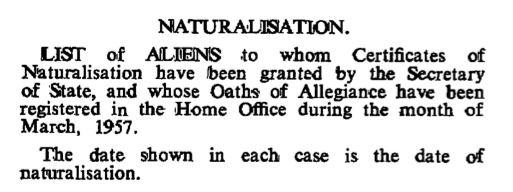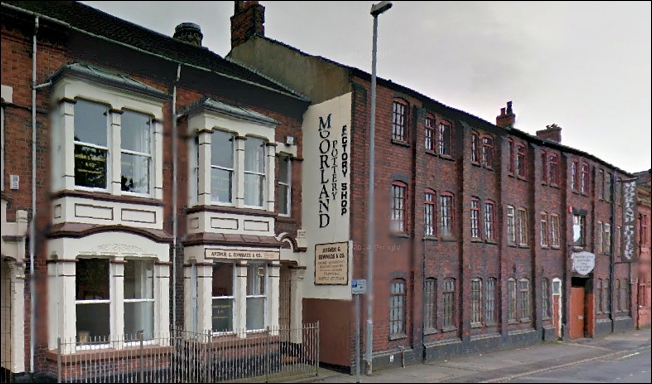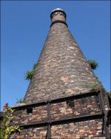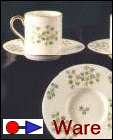![]()
|
Studio Szeiler Ltd |
Location and period of operation:
|
Studio Szeiler Ltd |
Hanley |
c.1951 |
1955
(7?) |
Figure manufacturer in earthenware at Hanley (c.1951-55) and the Chelsea Works, Burslem from c.1957-1986.
Joseph Szeiler was born in Hungary in 1924. By 1948 he had come to Britain to work as a coal miner. Finding no work he moved to Stoke-on-Trent and took a jobs in a number of potteries.
Szeiler then worked for a Mr C. S. Lancaster - a local modeller - at this time Szeiler also attended the Burslem School of Art during the evenings.
In 1951 he rented a room in a property near Lichfield Street, Hanley, where he started in business as a potter on his own account. The ware was fired in the kiln of a local tilery about a mile away.
To support his growing business Szeiler needed his own kiln and bigger premises and so in 1955, he bought the Chelsea Works, Moorland Road, Burslem. For a period he retained the Lichfield Street workshop which produced ware to be fired at the Chelsea Works.
In 1957 Joseph Szeiler became a naturalised British citizen.
Studio Szeiler produced tableware and giftware but specialised in animal figures which were modelled by Joseph Szeiler himself or by Joseph J Ferenczy, who found his way to England after fleeing Hungary in World War Two. Ferenczy read an article in the Pottery Gazette about Joseph Szeiler and travelled to Stoke-on-Trent, taking on a prominent role in the company.
Joseph Szeiler died c.1980 leaving behind his wife Maisie.
Maisie Szeiler asked Joseph's friend Edward Nother to run the business - which was continued under the Studio Szeiler name.
No more modelling was done after Szeiler died and the business used the existing moulds.
There was damaging competition from large quantities of cheap housewares and ‘cutsie’ animals that were pouring in from overseas and Edward Nother gave the business to Jonathan Plant and Adrian Tinsley.
In c.1989 Plant and Tinsley started Moorland Pottery at the Chelsea Works.
Previously: Vincent Pottery Co.
Subsequently: Moorland Pottery.
The London Gazette, 16 April 1957


record of the
naturalisation of Joseph Szeiler
Ceramic Artist; 74, Moorland Road, Burslem
|
|
|

Joseph Szeiler lived at 74, Moorland Road - next to the Chelsea Works on the right

Advert for Studio Szeiler
Pottery Gazette Reference Book - 1960
|
Joseph Szeiler Joseph Szeiler was born in South West Hungary in 1924, the son of a Master Butcher. He attended High School for eight years and in 1944 obtained his entry to the Budapest University. His ambition was to become a veterinary surgeon, and to this end he studied his chosen course for two and a half hears. Sadly, the uncertain and complicated situation of his country was such that he decided to give up his studies, and left Budapest in 1947.
By this time he had made two important decisions. Namely that he would make Britain his permanent home and that he would make every attempt to carve out a career for himself in the pottery industry. A far cry from veterinary practice. His plan was to become his own master. The first step was to learn all he could about the fundamentals of modelling, to that end obtaining employment with Mr C.S. Lancaster, a well known and respected modeller of Burslem, with whom he stayed for six months. During this period he acquired a good working knowledge of modelling, mouldmaking and casting. Szeiler also augmented his repertoire by attending the Burslem School of Art during the evenings. He was then taken on to work for Richards Tiles Ltd, as a faience maker for nearly twelve months.
Four years of hard work saw a small but steady income. However, faced with the need for his own kiln, and larger premises, in 1955, he bought
the Chelsea Works,
Moorland Road, Burslem. There, by hard work, careful planning, and a determination to succeed, he gradually expanded his scope of operation. Four rooms on the ground floor were given over to making, decorating, firing,
warehousing, and despatch. The Litchfield Street property was retained and some of his employees worked there on casting, fettling and drying. With the aid of a small van, the wares were carried from
Lichfield Street to Moorland Road for firing. [from
an interview with Joseph Szeiler as reported in |
|
Edward Nother
They were successful in obtaining a large order from the gift shop at the London Zoo. The zoo ordered hundreds and hundreds of animals, and where there wasn’t a mould for one particular type, they simply changed the decoration on a common mould. Hence a brown bear, a badger and a polar bear all came from the same mould. There was no more modelling done after Szeiler died, and production focussed more on the lifelike animals whose range was enormous and included obscure ones like armadillos, lizards and rhinos, And they continued to produce much of the more eccentric animals and table wares, money boxes etc. which are synonymous with Szeiler Studio. Increasingly Studio Szeiler was unable to compete with the large quantities of cheap housewares and ‘cutsie’ animals that were pouring in from overseas, there were restrictions with the site and its protected bottle kiln, and no money to invest for improvements. Eventually, Edward Nother had to give up the struggle and when the men running what is now Moorland Potteries showed an interest he gave it to them and so pottery manufacture continued at the Chelsea Works in Burslem. [information courtesy of Judith Ashby (neé Nother), Edward Nother's daughter] |
Marks used on ware for identification:
SZEILER
ENGLAND
STUDIO
SZEILER
ENGLAND
click for more information:
 details of the Chelsea Pottery Works |
 details of Szeiler Ware |
 details of the marks used by Szeiler |
Questions/comments/contributions? email: Steve Birks